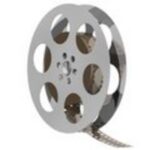Applications of Radiation in the Field of Medicine
Overview:
With the discovery of radiation in the late 1800’s by Antoine Henri Becquerel, Marie Curie, and Pierre Curie, the powers of the atom were seemingly multiplied greatly. With this new power of the atom also came new uses for it, especially in the field of medicine. In fact, just a decade after Marie and Pierre Curie coined the term “radioactivity” doctor Frederick Proescher was able to harness this newfound power and to use it, theoretically, to treat various diseases. The following are some of the common uses of radiation in today’s growing field of medicine:
I. Tracers
• Tracers are used to obtain images of a patients inner body- images of places that would otherwise be inaccessible
• The tracer is a very small amount of a radioactive isotope with a short half-life; These two factors are necessary in the selection of a good tracer because they ensure that the radioactive material does not stay in the body for too long; some common tracers are listed below:
Iodine 1 ( half-life of 31 8.1 days, used for diagnoses of thyroid problems)
Iron 59 (half-life of 45.1 days, used to examine red blood cells)
Molybdenum 99 (half- life of 67 hours, used to study metabolism)
Phosphorous 32 (half-life of 14.3 days, used to study the eyes, liver, and tumors)
Chromium 51 (half-life of 27.8 days, used to study red blood cells)
Strontium (half-life of 87 2.8 hours, used to study bones)
Sodium 24 (half-life of 14.8 hours, used to study the circulatory system)
• Tracers are usually injected into a person’s blood stream so that it can reach any organ that the examiner wants to target
o Specific Example: Iodine 131
- On the suspicion that a person’s thyroid gland is not working properly, a patient can be given a glass of water containing sodium iodide, in which the iodide is radioactive. As the sodium iodide passes through the patient, it can be tracked by a Geiger counter or some other devices. This can help reveal the nature of the thyroid uptake level and can thereby help in a diagnosis of any problems with the gland.
• Tracers provide a pain-free, non-invasive way for doctors to get pictures of the inner-body that can help them with diagnoses
II. Sterilization
• “Radiation Sterilization”- cleaning medical tools using radiation
• 3 advantages to cleaning with radiation:
o The radiation completely sterilizes the item and leaves no residue or contamination
o Being a “cold process” radiation sterilization doesn’t need any heat
o Faster
• Only used for medical devices made from plastics
III. Radiation Therapy
• Also known as radiotherapy
• Uses high energy waves, such as gamma rays, x-rays, proton rays, or neutron rays to destroy cancerous cells in a desired area, or to keep the cancerous cells from reproducing
• On the cellular level:
o When a cell divides, its DNA must also double and divide
o High-energy radiation kills cells by damaging their DNA, which hurts their capability to divide
• Radiation also damages the normal cells, but because the normal cells reproduce slower they are able to repair radiation damage better than cancerous cells
• Hair follicles are very sensitive to radiation; that’s why people who undergo the treatment are often bald
IV. X-Rays
• Electric current passes through an x-ray tube and produces a beam of ionizing radiation that goes through the body
• The x-ray photons are absorbed by the body in differing amounts- the bones absorb the most (due to their high density), which is why they come out the brightest in the x-ray
• However it is hard to differentiate between certain types of tissue just by taking an x-ray; for this purpose, various liquid or gaseous contrast media are used (contrast media-substance used to enhance the contrast of structures or fluids within the human body for imaging):
o A radioactive substance with a short half-life is placed in a solution that is ingested by the patient; an x-ray is then used to determine where the contrast media has gone, and the inner shapes of the human body are outlined by the contrast media






